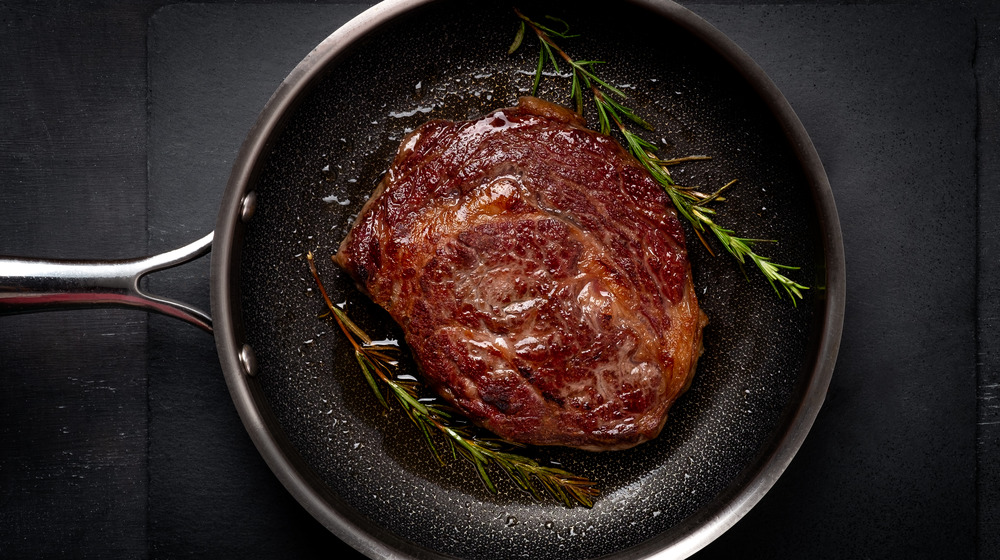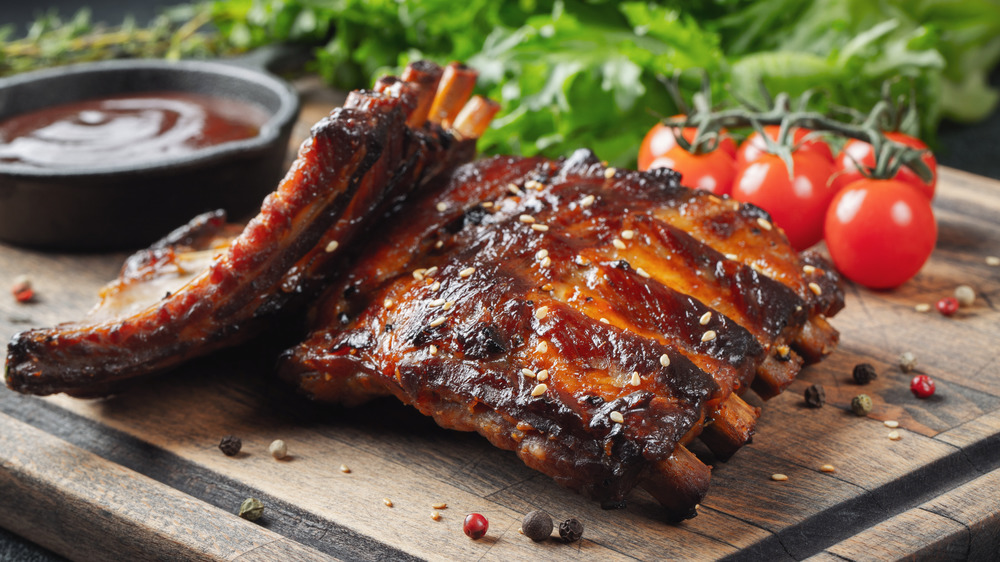You've Been Caramelizing Your Meat All Wrong
Caramelizing, when it comes to cooking, is a word – and a technique – many of us don't fully understand, and certain celebrity chefs don't exactly help when they persist in misusing the term – Rachael Ray, for example, who seems to think that onions can be caramelized in as little as 20 minutes (they can't; they'll simply be sauteed). While caramelizing does mean browning, it also means a little more than just that, which is why we need a separate word instead of using the perfectly acceptable culinary verb "browning." According to Bon Appétit, caramelization occurs when sugar meets heat. In the case of the aforementioned onions, this could be a natural sugar contained in the vegetable, but in order for meat to caramelize, it needs to be coated in a marinade or glaze that contains some type of sweetener.
Okay, now that we've got that straight, Frank Proto, the Director of Culinary Operations at the Institute of Culinary Education, has a few tips to offer on how to make sure your meat caramelizes nicely instead of turning into a nasty, burnt mess and has shared them with Mashed. Sugar + heat = caramelization, but sugar + too much heat = inedible, disgusting, and a real pain to clean off your pan.
Don't make these common caramelizing mistakes
One thing you should avoid doing when you caramelize meat is adding the meat to a pan that's not quite hot enough. Take the time needed to preheat the pan, since if you don't. Proto says "If the pan is not hot enough, the meat will steam rather than caramelize." He also advises against crowding the pan, saying it's better to cook the meat in small batches since cooking too much meat at once will also lead to some of it steaming rather than cooking as it should.
Another tip Proto offers is to have the meat dry before you add it to the pan. If you're using a dry seasoning rub, you should be good to go, but if you've used a marinade, you will need to remove the meat from the marinade and let it drip-dry on a rack before cooking. Once the meat is dry and the pan is hot, you will also need a little oil or fat to help the meat cook without sticking – Proto advises using enough fat to cover the bottom of the pan. Once the fat is smoking lightly, that's when you add the meat in a single layer. Cook until the sugar in the rub or glaze is browned (but not burnt!!), then flip the meat to the other side and repeat the process.

